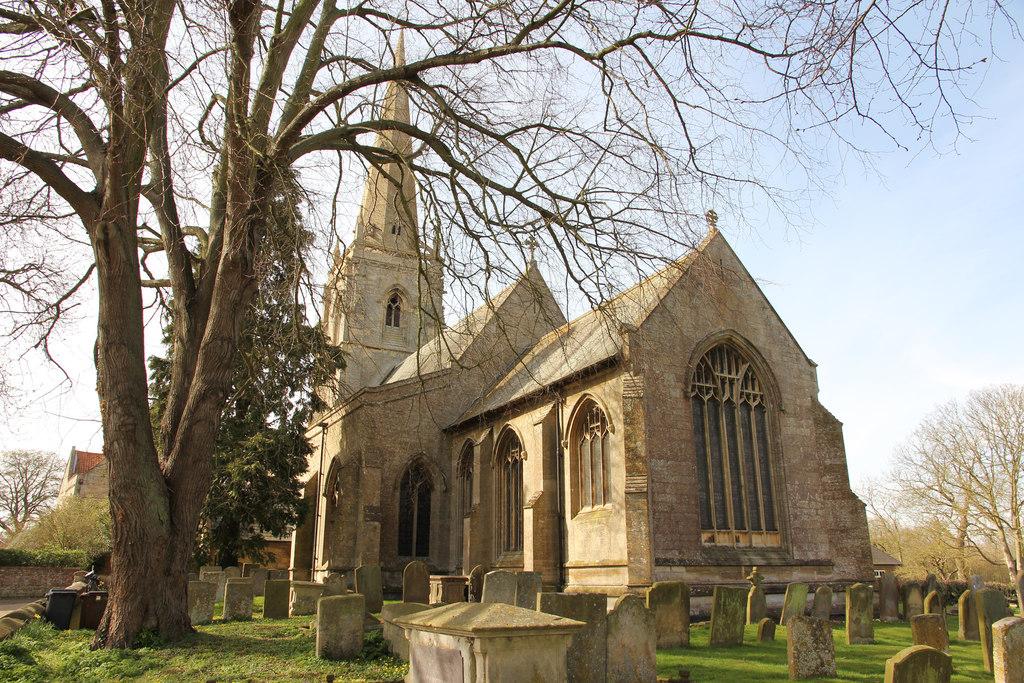St Mary & All Saints
Swarby, Lincolnshire
Grade II listed building dating from the 13th century.

800 years old, small and beautiful.
Silk Willoughby, Lincolnshire
The church is probably on the site of an earlier pre Norman church, Domesday Book (1086/7) having listed a church.
The person for whom the present church was built was William Armine, who bought the manors of Silkby and Wilgebi (hence Silk Willoughby) from Rodger de Mortayne and Isabelle, his wife, in 1329/30. He became Bishop of Norwich (1325-1336), Lord Chancellor of England (1326) and Lord High Treasurer (1331-1332).
The church is built of stone. The nave and aisles are Decorated, ( built between 1329/30 and 1336), and the chancel was rebuilt in 1878 in the Perpendicular style. We have a ring of six bells.
The wooden Jacobean pulpit is probably of the period of James I (1603-1625). The lectern is an upstanding wooden Eagle on a triangular base and stand by W Kingsley Mac Dermott in 1910. The font is Norman c1100 and is a drum shaped bowl in stone 200+ years older than the church. The pews are old ( some thought to be 14th or 15th century) but a few are more modern copies, all with poppyhead carved ends.
A few fragments and larger pieces of medieval glass remain and are incorporated into later windows. The window of the Last Supper by William Francis Dixon ( 1848-1928) in the south wall of the chancel was installed in 1890. The chancel east window, installed in 1897, is by Christopher Whall, leader of a group of Arts & Crafts stained glass artists. The Jubilee window was commissioned for the occasion of the Golden Jubilee of Her Majesty Queen Elizabeth II. The designer was Glen Carter.
Swarby, Lincolnshire
Grade II listed building dating from the 13th century.
Sleaford, Lincolnshire
St Denys is on the east side of the market place, and is surrounded by fine old buildings from many periods, including the 16th century half timbered vicarage.
Wilsford, Lincolnshire
A church at Wilsford is mentioned in Domesday Book, but the building dates to the 11th to 15th centuries, with a restoration in 1860 by Kirk and Parry.